“SERP” stands for “search engine results page.”
Without SERPs, there wouldn’t be search engine optimization (SEO). If you’ve used a search engine like Google, you’ve probably encountered a SERP. In fact, you might have clicked on a SERP result or a SERP listing to get to this blog post.
Most SERPs contain both organic search results and sponsored or paid placements from platforms like Google Ads. As search engine marketers, we might be interested in appearing in both places.
SERPs look a lot different now than they did when I first started doing SEO. You’ve got so many new organic SERP features, like featured snippets and People Also Ask, and the location of paid ads has changed a number of times.
While there are many different search engines, each with a unique SERP layout, this article will focus on Google’s SERPs, given that Google is by far the most popular search engine. I’ll show you the different parts of a SERP and highlight a few of my favorite SERP features, which you might want to optimize for.
Structure of a SERP
Most SERPs have a combination of sponsored ads, organic results, and SERP features:
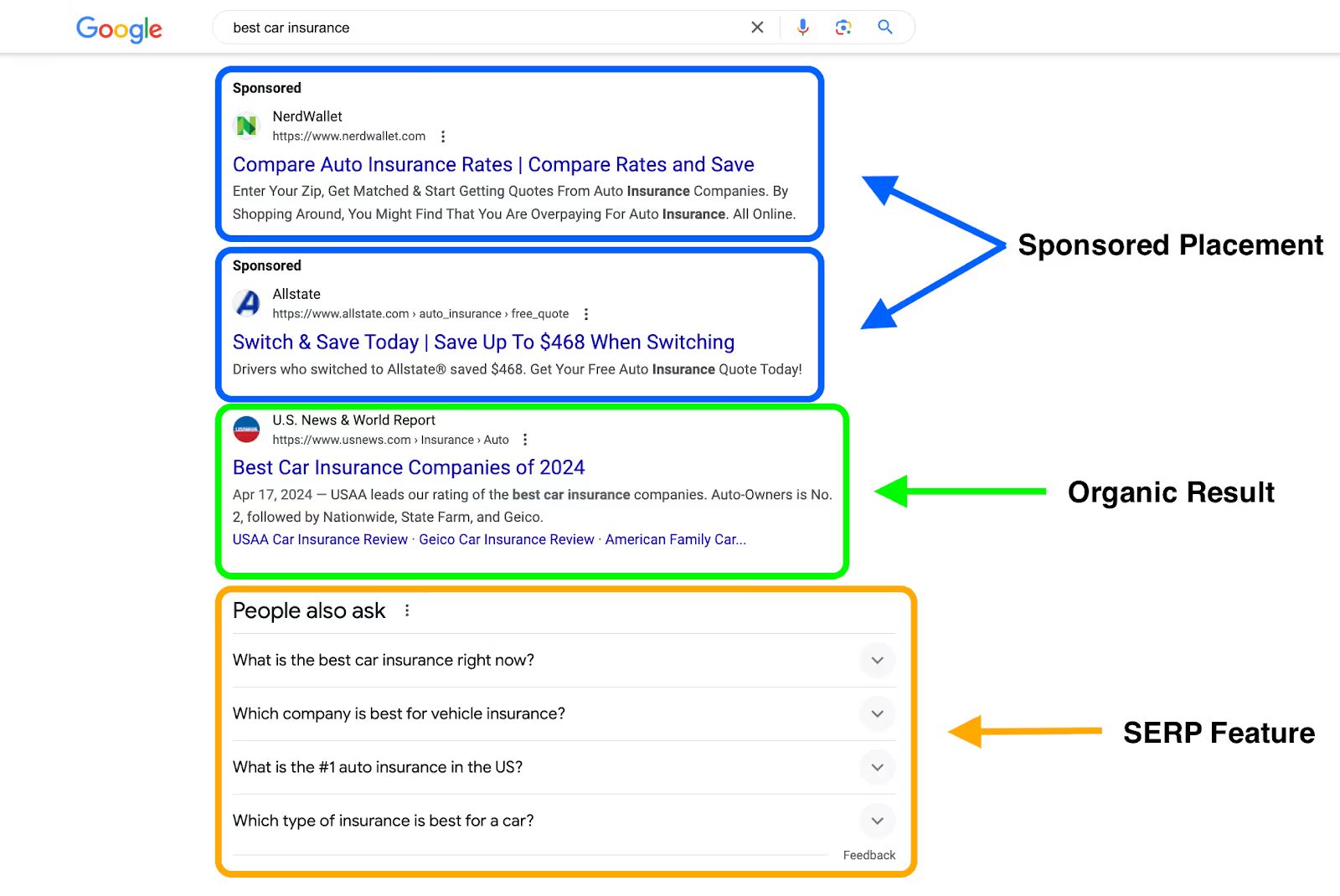
- Sponsored Placements: Google charges advertisers for these highly placed listings. The cost of these placements varies depending on the keyword, and the price is determined by auction. In the example above, NerdWallet is bidding in the first sponsored placement. Notice the “Sponsored” attribution in the top left corner of the listing t. Sponsored ads don’t always appear on SERPs, and they won’t appear for every search query.
- Organic Results: Google does not charge publishers for appearing in organic search results. SEO is the process of getting your webpages to appear highly in this section of a SERP. In the example above, a U.S. News & World Report page is the top-ranking result.
- SERP Feature: Google has released a number of SERP features over the years. In the example above, Google is generating a People Also Ask (PAA) box to help answer common questions about car insurance, such as “Which type of insurance is best for a car?” This is an organic placement, and advertisers can’t pay to appear in a PAA box.
Which Part of a SERP Gets the Most Clicks?
According to an analysis by SparkToro and SimilarWeb, 95.4% of all clicks go to organic search results, and 4.6% of clicks go to sponsored placements. In a separate analysis, Jumpshot and Moz found that organic search results get approximately twenty times as many clicks as sponsored ads.
Interestingly, SparkToro and SimilarWeb found that 64.8% of searches result in a zero-click search, likely due to the advent of a large number of SERP features, including feature snippets and PAA boxes, that attempt to answer search queries without requiring a searcher to click on a SERP result.
It’s worth noting that this analysis found substantial differences in behavior between searchers on desktop and mobile devices. For example, searchers are much more likely to click on either an organic result or a sponsored ad when searching on desktop than they are on mobile.
Organic Click-Through Rates
While it’s clear that searchers prefer to click on organic search results, it’s important to understand that not all organic search results have the same click-through rate (CTR) or get the same amount of traffic.
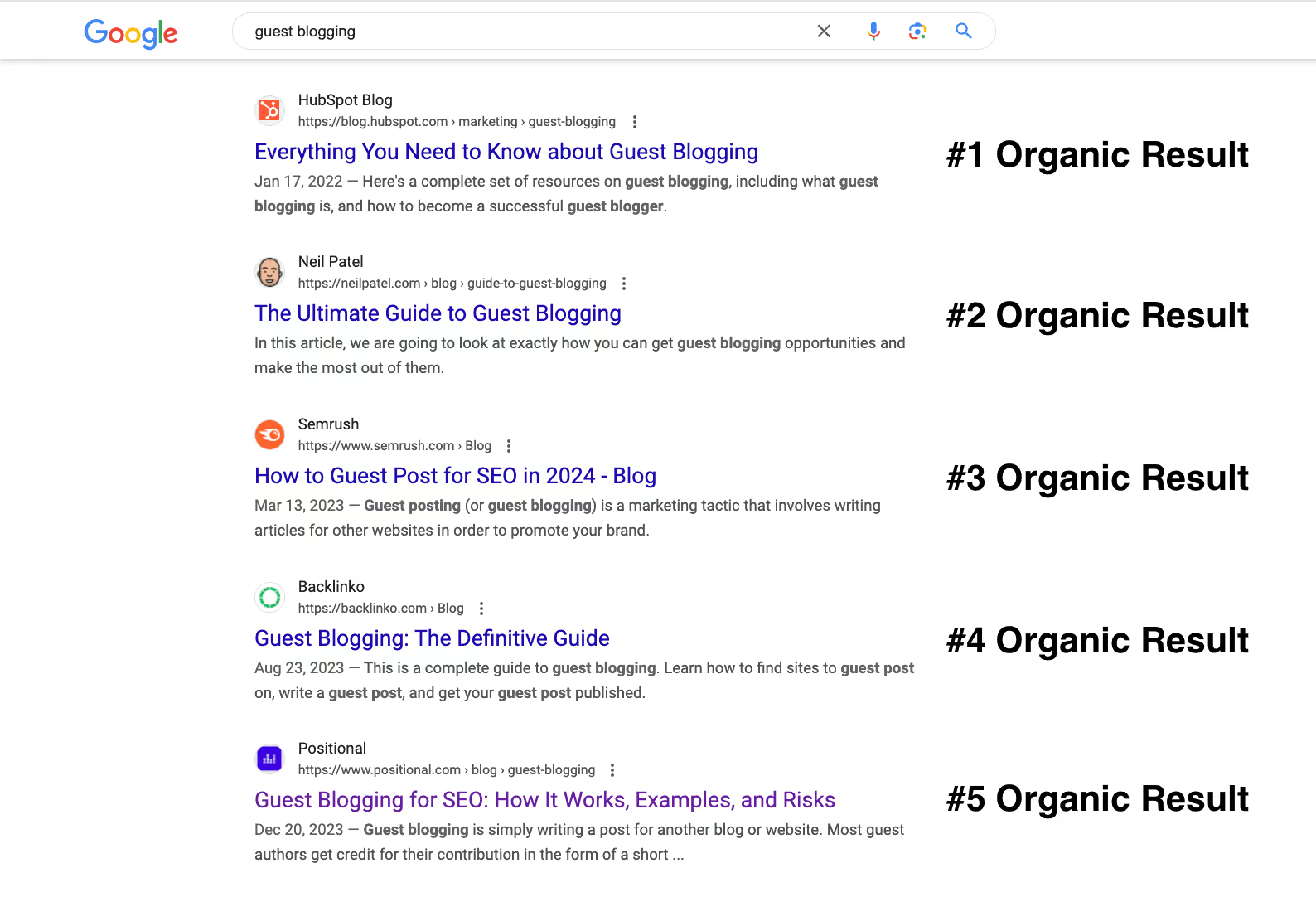
In the example above, you’ll see that one of our blog posts is currently ranking in the fifth organic position for the keyword “guest blogging,” and according to Backlinko, our webpage should receive 6.3% of all organic clicks for this keyword. However, the first and second search results are receiving approximately 27.6% and 15.8% of organic clicks, respectively.
In other words, getting to the first page of organic search is important, but your webpage's location on that page has a big effect on the amount of traffic it will receive.
Many factors impact the location of your webpage in organic search results, including your website's domain authority, the number of backlinks the webpage has, your site’s topical authority, and the quality of your content.
Elements of an Organic Search Result
You can control certain elements of your organic SERP result — for example, your title tag and your meta description:

Your title tags and meta descriptions will meaningfully impact your CTR and, therefore, your webpage’s ranking in search results.
Google will also display your site name and URL or breadcrumbs above the title tag.
Once in a while, you might notice a rich snippet on a SERP, too. For example, in this organic search result, Google is currently pulling the author’s image into the search result:

And if you’ve ever been looking for a new product, you’ve likely seen additional elements included in the rich snippet — for example, star ratings or author bylines:
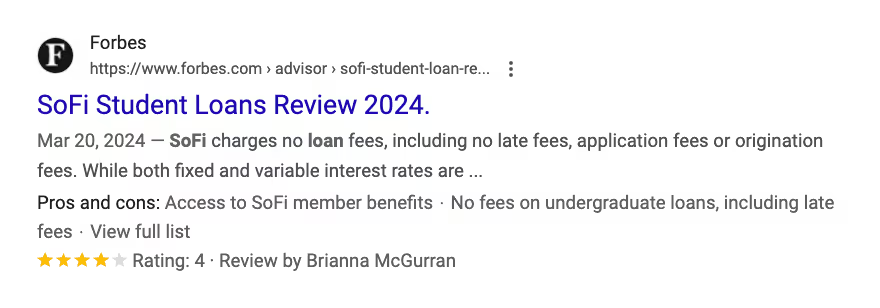
Rich snippets are helpful, as they allow you to take up more real estate within the SERP and further entice searchers to click on your result. We wrote a fairly in-depth guide on the different types of rich snippets, and we explained how you can implement them with structured data.
Elements of a Sponsored Placement
As with organic search results, you’ll have some control over what gets displayed on the SERP.

A sponsored ad will include a headline and a description, and could include other elements, such as sitelinks. And of course, you’ll be able to specify the URL that you’d like searchers to navigate to after clicking on your ad.
Sponsored ads typically appear at the very top and bottom of search results, but lately, Google has been testing placing sponsored ads in between organic search results. I’ve been noticing this more and more in my own Google searches.
For example, I noticed that one of our blog pages is appearing below sponsored ads in the middle of this SERP:

My Favorite SERP Features
There are many different types of SERP features. Two of my favorites are featured snippets, and PAA (People Also Ask). These are also the two most popular SERP features — or the two features that appear the most often in search results, according to RankRanger’s analysis.
Featured Snippets
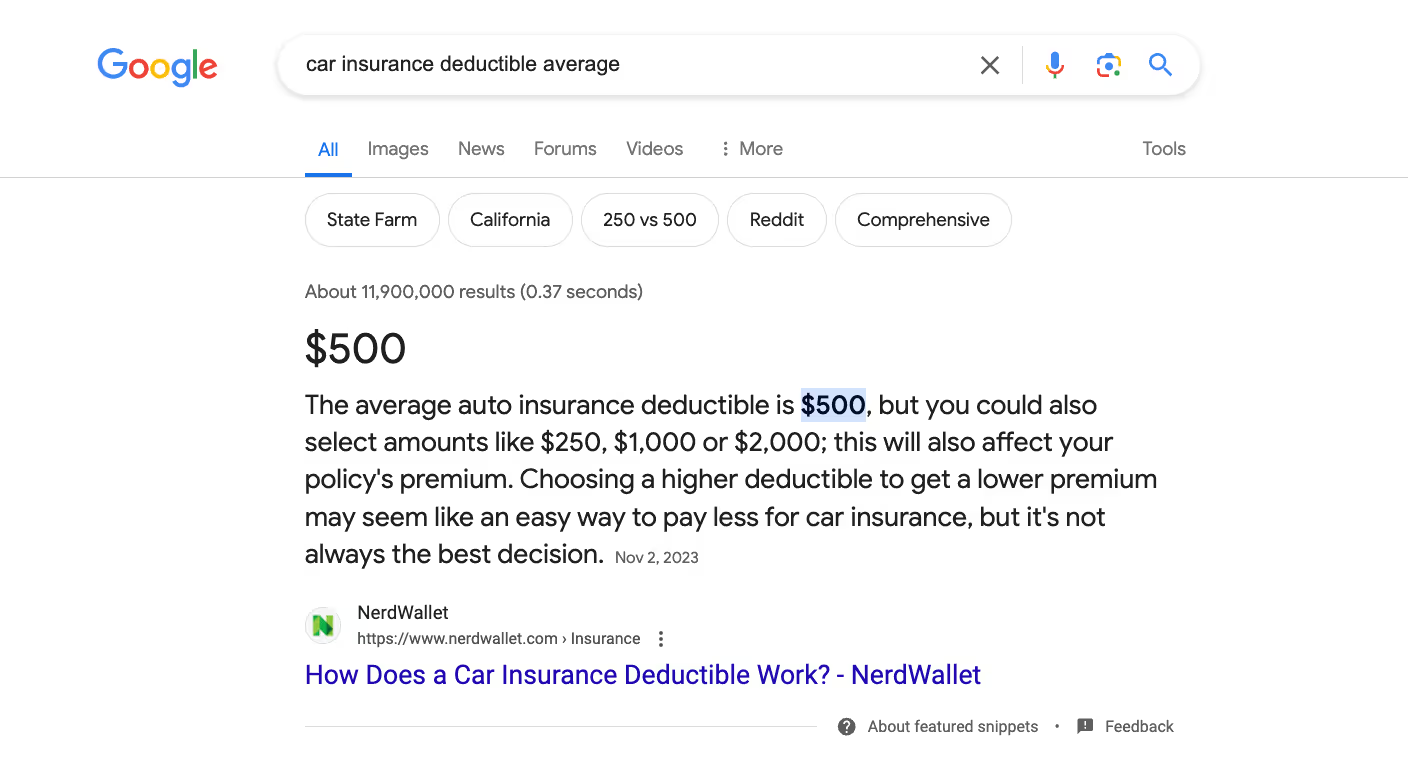
Google released featured snippets in 2014 to help searchers find information faster and provide a better search experience. Featured snippets are often referred to as “position 0,” as they typically appear above the first organic search result.
There are several different types of featured snippets, including paragraphs, lists, tables, and videos. According to the RankRanger analysis I referenced earlier, featured snippets appear on roughly 15% of SERPs at the time of this writing.
In this case, the featured snippet appears above the sponsored ad placements:

I have a love-hate relationship with featured snippets.
A placement within a featured snippet will usually result in more traffic to your website. Ahrefs found that 8.6% of clicks go to the featured snippet; in other words, if you’re currently ranking toward the middle or bottom of the first page of search results, you’d get more traffic with a featured snippet placement.
However, featured snippets tend to reduce the total number of clicks to webpages from SERPs.
And that makes sense. For example, as shown above, a NerdWallet page is pulled into the SERP, and a featured snippet from that page instantly answers the search query — likely reducing the number of clicks it gets back to its website.
I wrote a fairly detailed guide on featured snippets, including a breakdown of the different types and some tips for optimizing your webpages for them.
People Also Ask
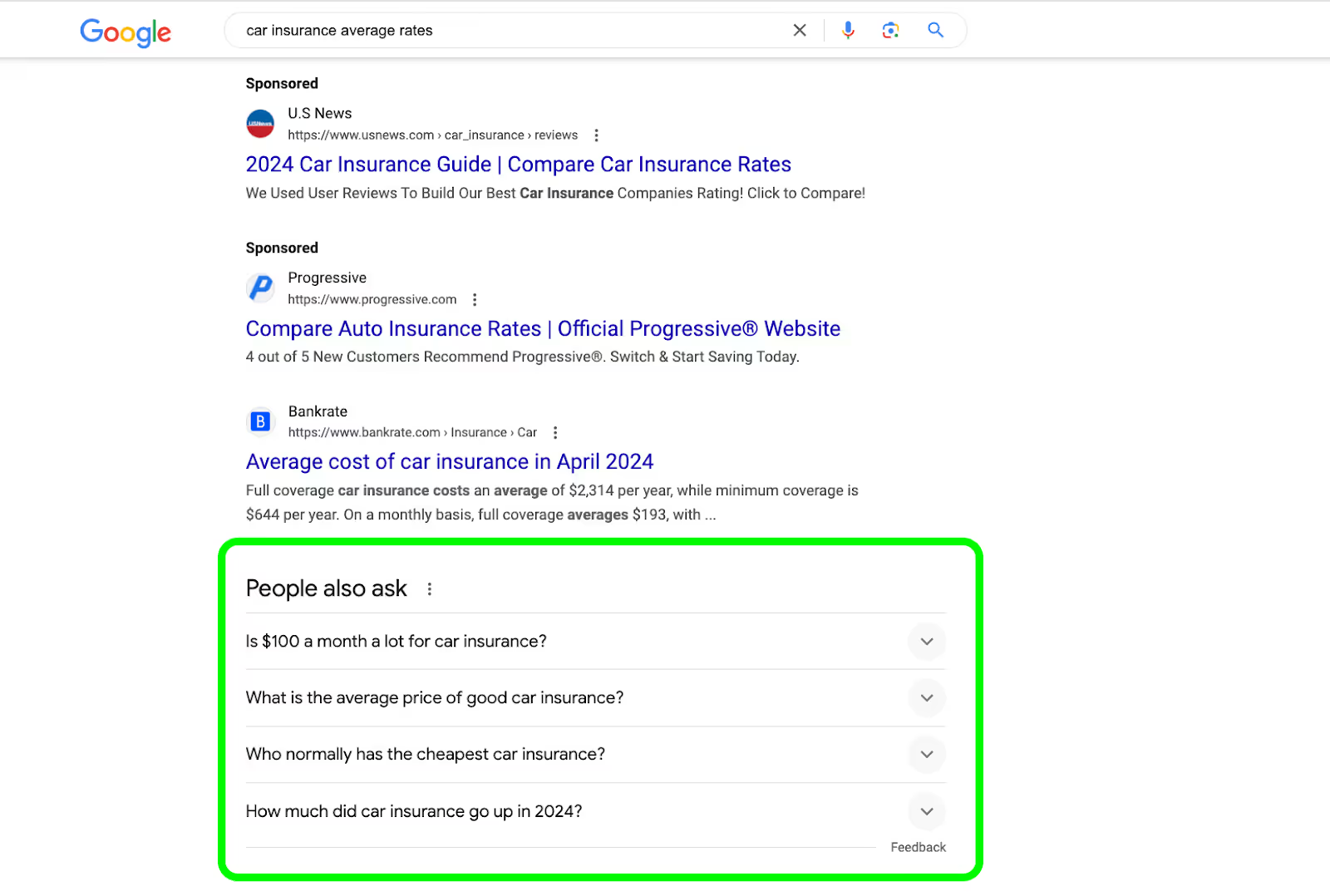
Google introduced the PAA section in 2015 as a way to surface questions and answers related to a search term. According to the RankRanger analysis referenced earlier, PAA boxes appear on roughly 70% of SERPs at the time of this writing. In other words, they’re very popular and appear far more frequently than any other SERP feature.
If a searcher clicks on a question, they are presented with an instant answer:
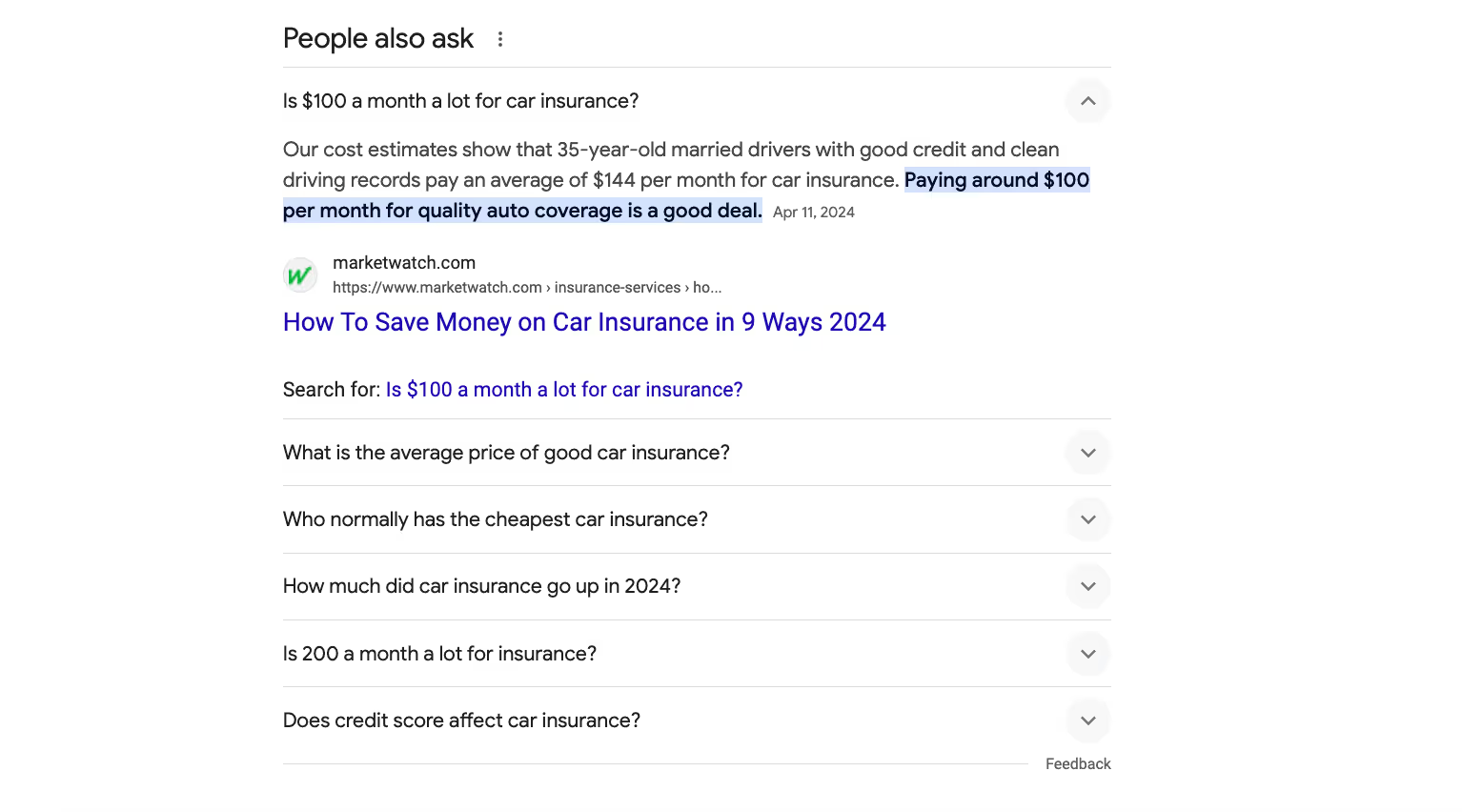
Google then expands the number of questions shown. As with featured snippets, there are a number of different types of formats that could be displayed within a PAA box. For example, there is paragraph text, but there are also bulleted lists and tables.
Semrush found that PAA boxes are prominently placed in most search results and appear within the top 3 organic search results 75% of the time. However, Backlinko found that users aren’t quite as likely to engage with a PAA box — but this is highly dependent on the specific keyword.
I wrote an in-depth guide on PAA, including a breakdown of the different types and some tips for optimizing your webpages for them.
Of course, there are many other types of SERP features, including top stories, recipes, image packs, and more.
Search Generative Experience (SGE)
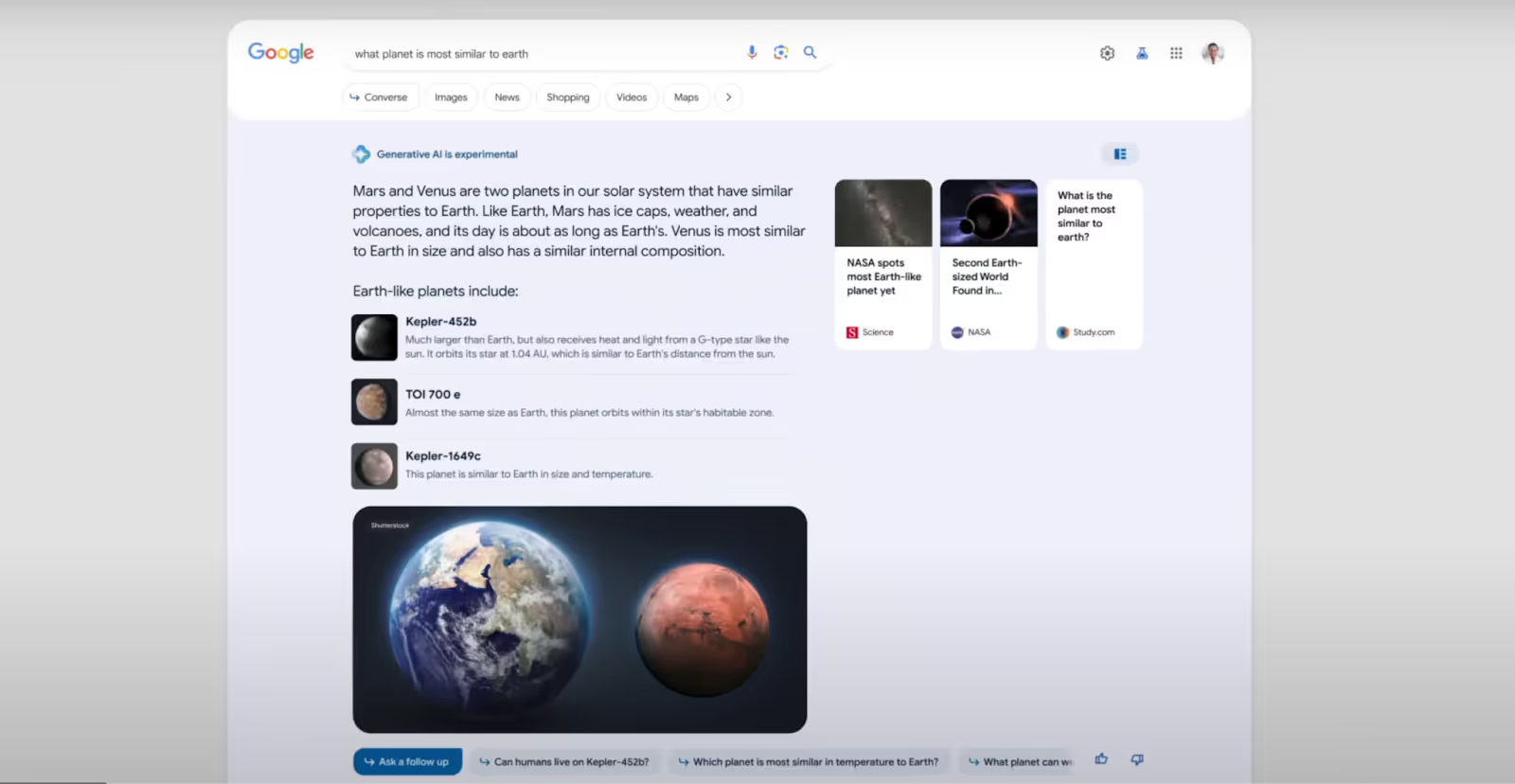
In 2023, Google announced the release of Search Generative Experience (SGE).
Due to the rise in popularity of tools like ChatGPT, some people argue that Google launched SGE as a way to stay competitive in the generative AI landscape.
SGE results appear at the top of SERPs. SGE results are similar to featured snippets, providing a near-instant answer to the search query. Like featured snippets and PAA boxes, SGE results provide links back to publishers.
As of this writing, Google is still testing SGE, and it has not been released everywhere.
Many search engine marketers worry about the impact of SGE on CTR for both sponsored and organic search results. A study from Authoritas found that search queries in the e-commerce, electronics, and fashion spaces are at the most risk for disruption. Whereas Your Money or Your Life (YMYL) verticals, like finance and health, saw the lowest penetration of SGE.
A study from Raptive found that publishers could lose an estimated $2 billion in ad revenue due to traffic reduction caused by SGE.
However, some argue that Google doesn’t want to release SGE due to the unknown impact on the company’s ad business. Time will tell.
Final Thoughts
A SERP is simply a search engine results page. Without SERPs, there wouldn’t be search engine marketing, including Google Ads and SEO.
SERPs are constantly changing. Google is always releasing new SERP features, and lately, you may have noticed that the locations of sponsored placements are shifting throughout the page. Moreover, the impact of SGE rolling out to more users and across more search queries could significantly affect search results.
Should you focus on sponsored placements, organic placements, or both?
It depends on your budget, timeline, and the keywords you’re trying to target. Keep in mind that appearing highly in organic search results will typically yield more traffic than bidding into the sponsored placements. But many companies do both!





